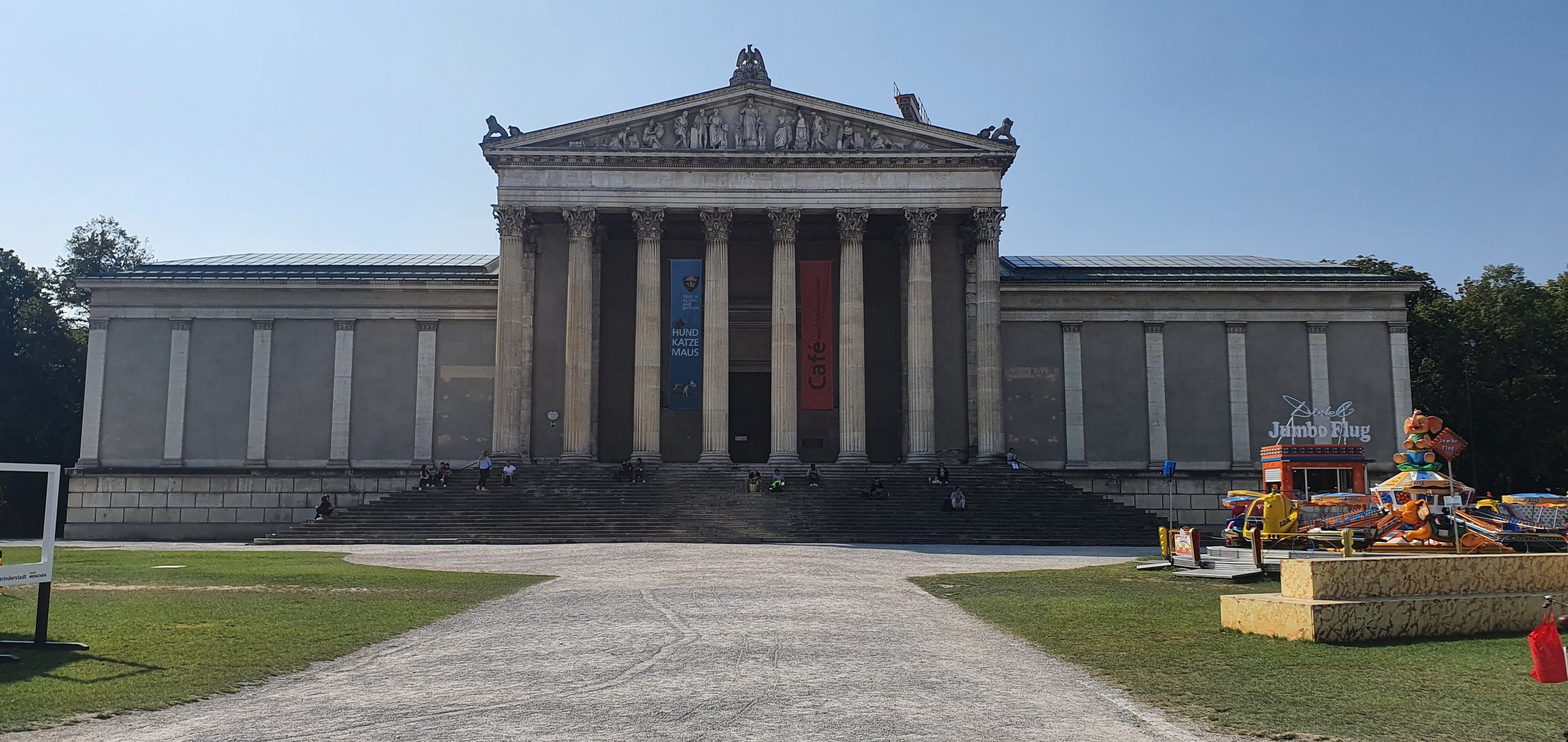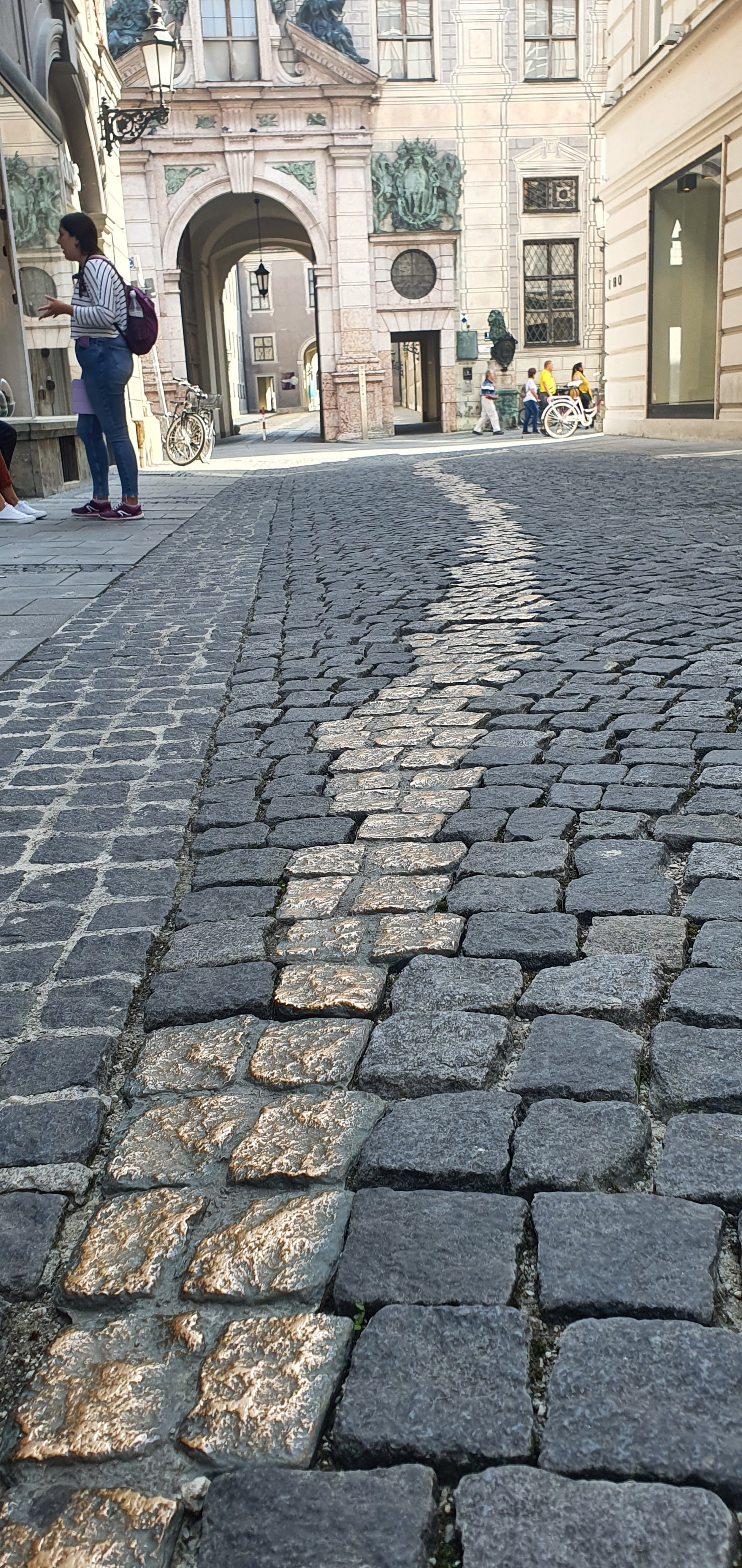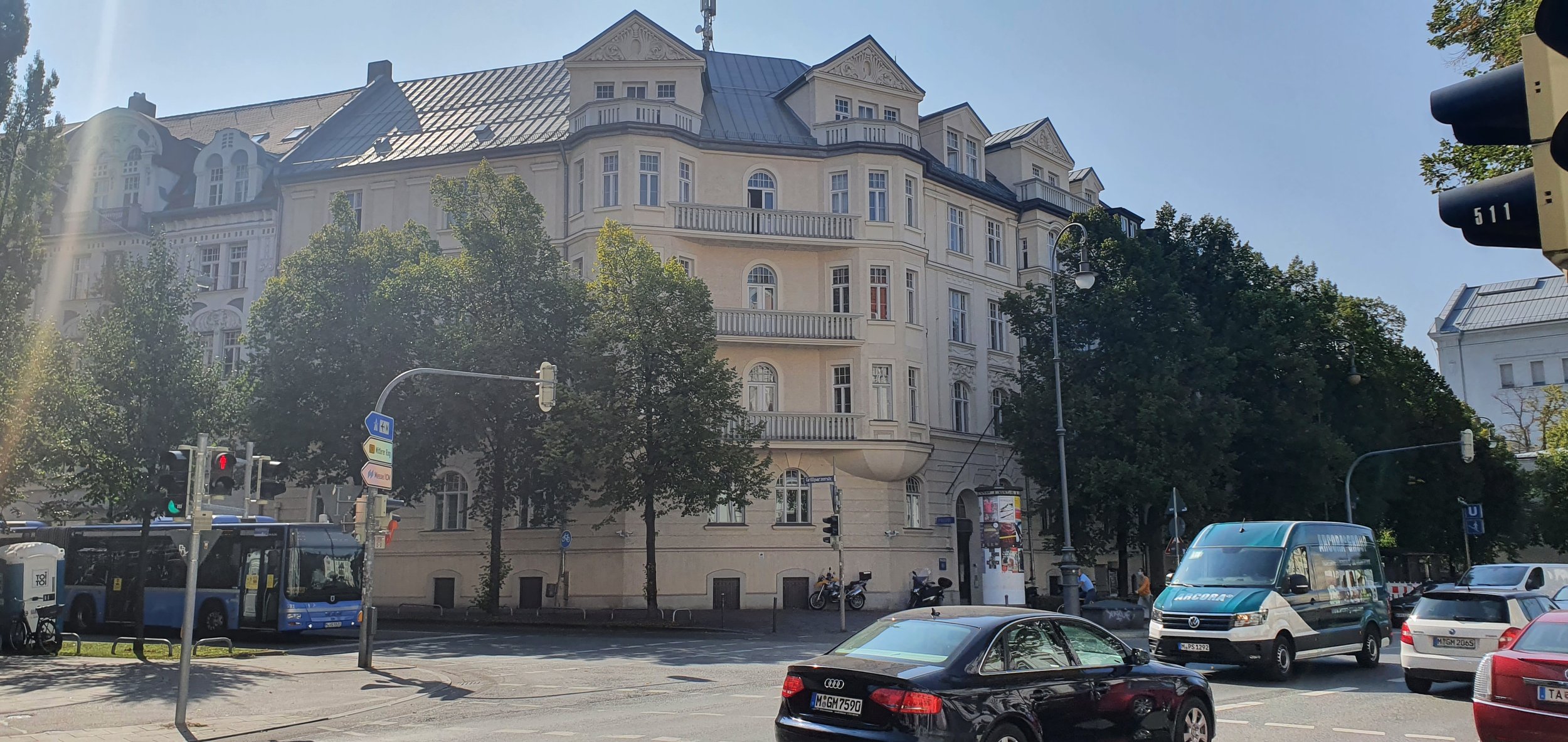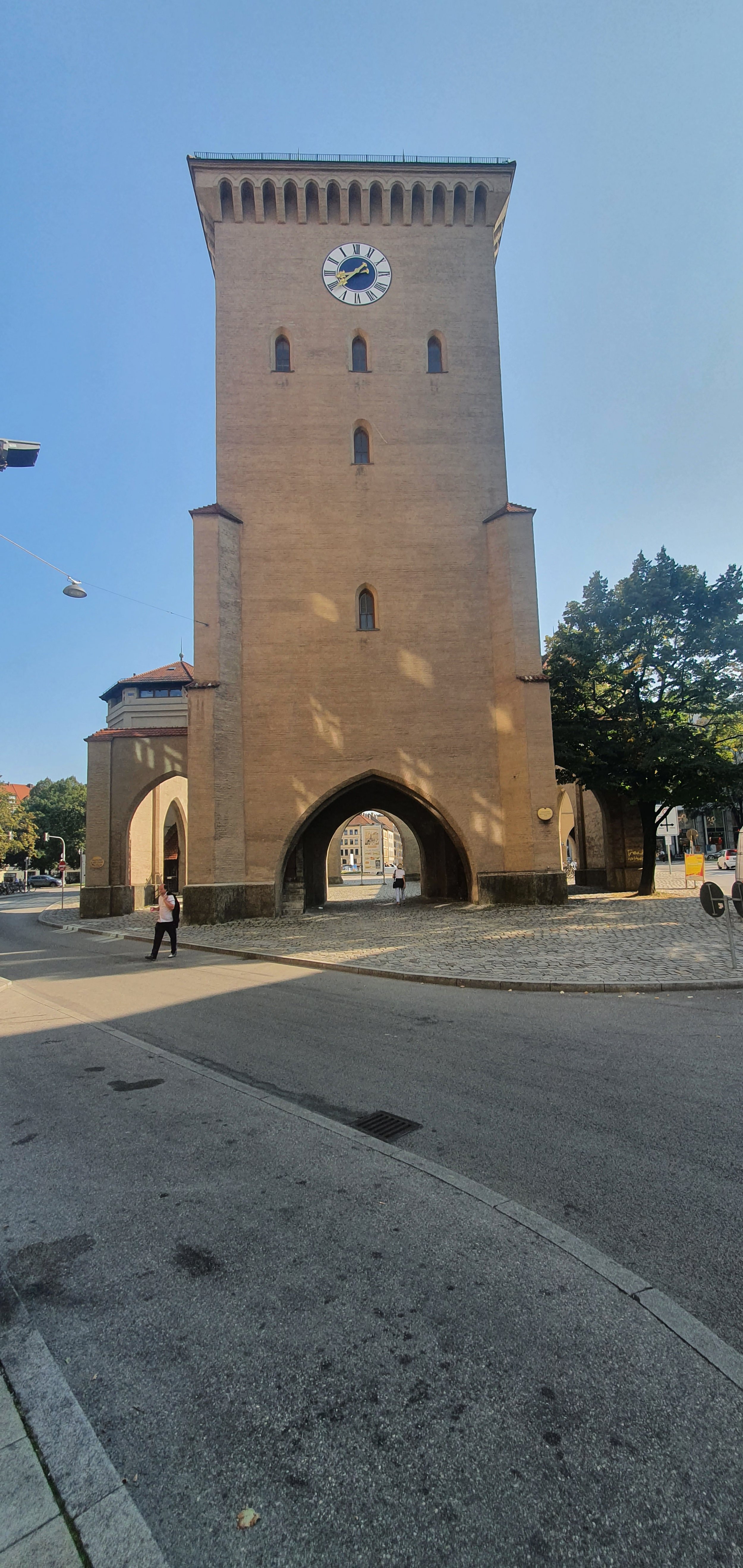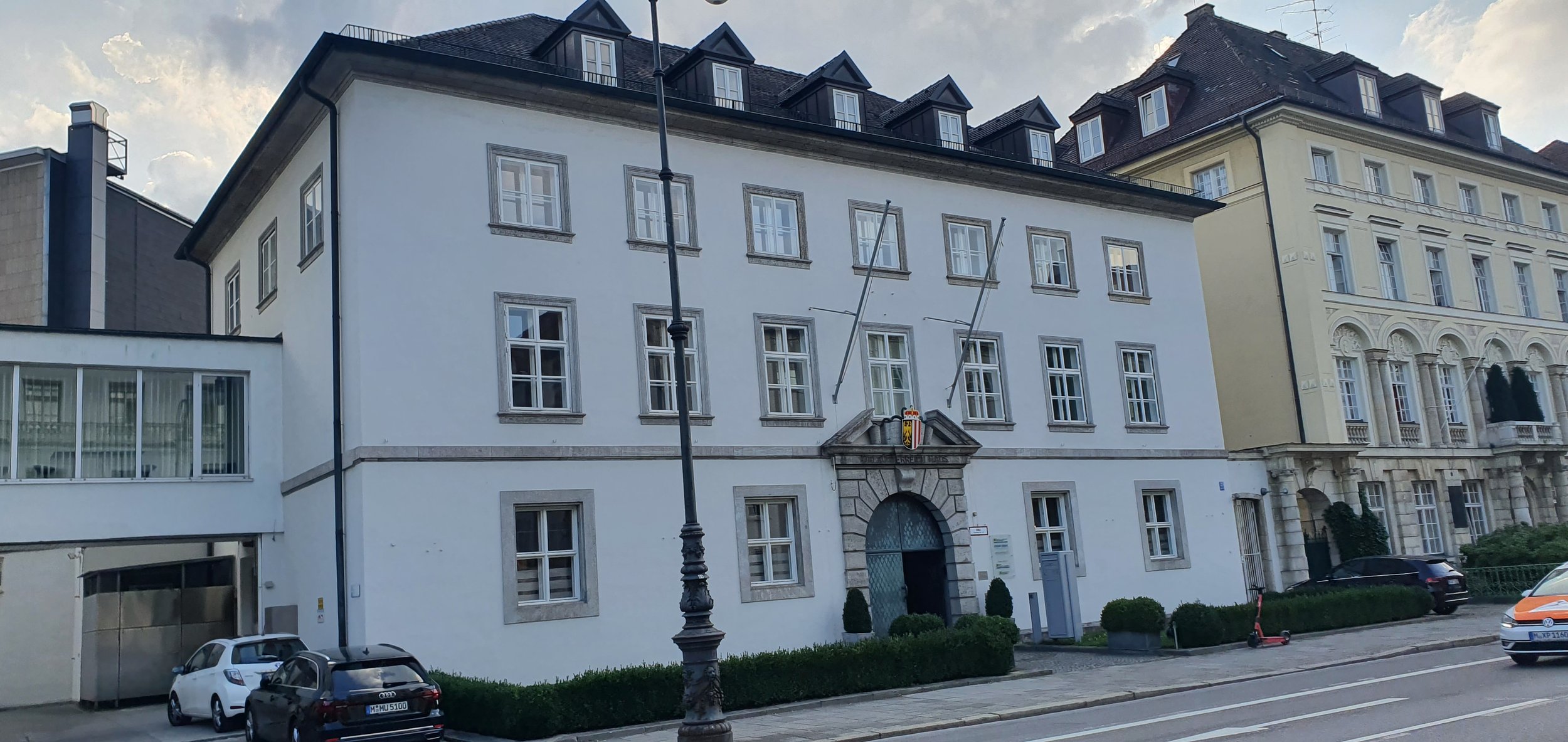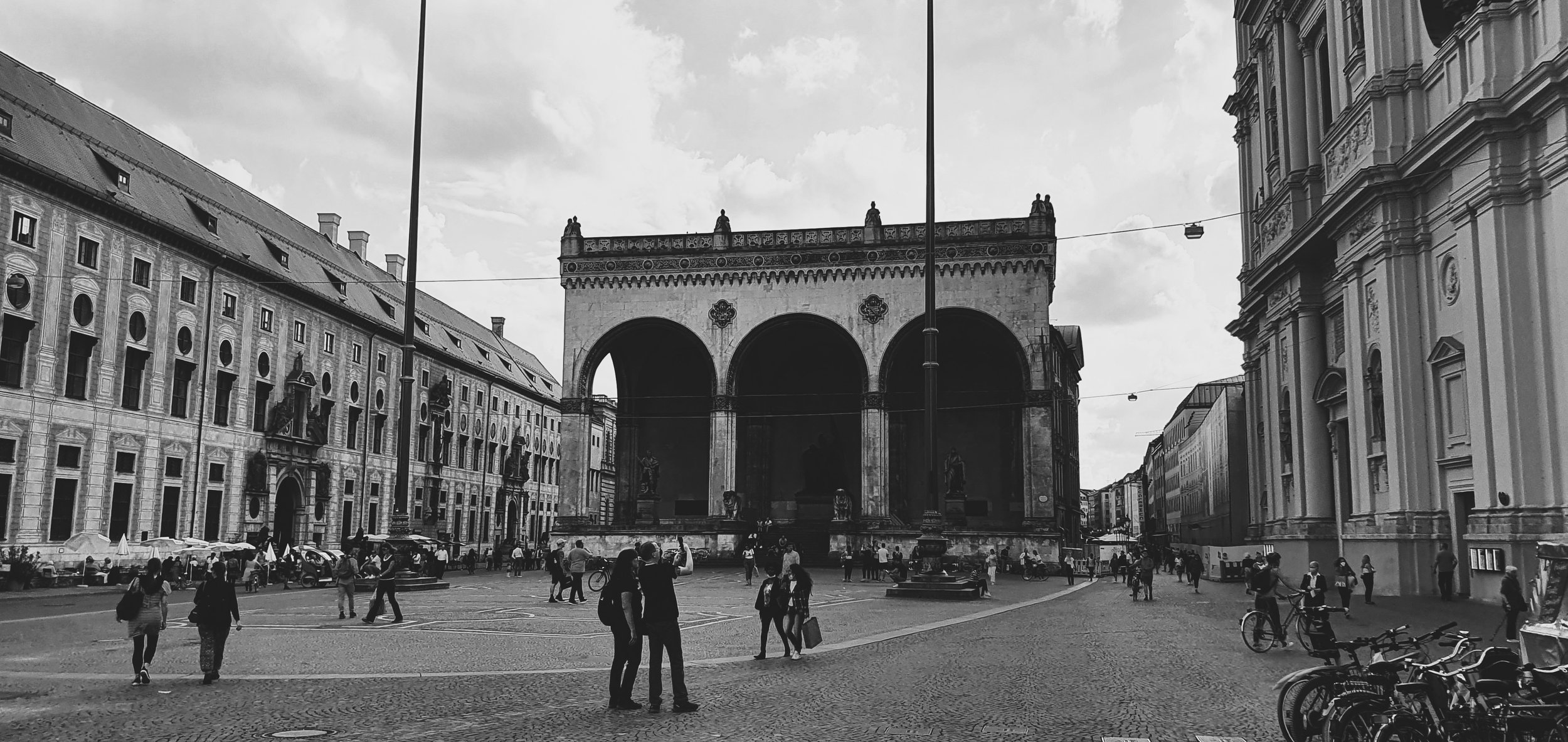
My Photos
Munich
Konigsplatz dressed for Octoberfest - As a beautiful and monumental place, the Königplatz was used during the Third Reich as a square for the Nazi Party's mass rallies. The Brown House, the national headquarters of the Nazi Party in Germany was located at 45 Brienner Straße close to the square.
Konigsplatz Museum - Built in the style of European Neoclassicism in the 19th century, it displays the Propyläen Gate and, facing each other, the Glyptothek (archeological museum) and the Staatliche Antikensammlungen (art museum). The area around Königsplatz is home to the Kunstareal, Munich's gallery and museum quarter.
Documentation Centre (Brown House) - Two Honor Temples (Ehrentempel) were erected at the east side of the Königsplatz in severe neo-Greek style to echo the architecture of the older buildings; they "enshrined" the remains of the sixteen Nazis killed in the 1923 Beer Hall Putsch, who were worshipped by Nazis as martyrs. Both temples were demolished by the US Army in 1947, although their platforms remain to this day. A WW2 Museum stands today where the Brown once stood.
Feldhernhalle - On 9 November 1923, the Feldherrnhalle was the place where Hitler’s attempted putsch was defeated, leading to the hall becoming an iconic destination for the National Socialists and a propaganda tool for the party. When he assumed power, Hitler had a massive bronze tablet installed, containing a swastika for the “martyrs of the movement” and the phrase “Und ihr habt doch gesiegt!” (“And you were victorious after all!”).
Feldherrnhalle 2 - Two whopping lions guard the entrance to Feldherrnhalle (1841-1844). If you've ever been to Florence this one may ring a bell. The hall was designed with the Tuscan capital's Loggia dei Lanza in mind.
Feldherrhalle 3 - The Feldherrnhalle plays an important role in Munich’s history: King Ludwig I had the structure built as a tribute to the glory of the Bavarian army. The two bronze statues in the side arcades were cast from melted canons: they depict the Count of Tilly, a victorious general in the Catholic League during the Thirty Years’ War, and General von Wrede, who commanded Bavarian troops in the battle against Napoleon’s army.
Druckebergasse - An SS guard of honour watched the memorial at all times. People were only permitted to pass if they performed a “Deutsche Gruß” (Nazi salute). To avoid this ritual, many locals took a detour down Viscardigasse behind the Feldherrnhalle, which led to the alleyway being nicknamed “Drückebergergasserl” (literally “shirkers’ alley”). Gold paving stones there now remind passers-by of this civil resistance.
National theatre - The National Theatre on Max-Joseph-Platz in Munich, Germany, is a historic opera house, home of the Bavarian State Opera, Bavarian State Orchestra and the Bavarian State Ballet.
Hofbrauhaus - In the late hours of February 24, 1920, the HOFBRAUHAUS witnessed Hitler’s appearance in front of 2000 people, a figure and success which hit Hitler and Drexler like a ton of bricks. It is worth mentioning that a significant portion of the attendees, up to ¼ amounted to political opponents, including the communists. That very day the party was re-titled into ‘Nationalsozialistische Deutsche Arbeiterpartei’, Hitler did use the improvised grand stone within the Festsaal of Hofbrauhaus to proclaim the infamous 25 points of the party program.
Hofbrauhaus garden - People had encapsulated the new reality with Hitler’s access to the hearts and minds of a wide audience within the biggest beer halls in Munich. In the 1920's, Hitler made 20 of his speeches here, with a running time of up to two hours each and a number of attendees from 800 to an enormous 3000. On July 29, 1921, the Hofbrauhaus witnessed the election of Hitler (by means of 554 members) as the chairman of the NSDAP, fulfilling him as a supreme leader of the movement and leaving Anton Drexler as a nominal honorary president.
Marienplatz - Marienplatz (square) has been at the centre of the city since Munich was founded by Henry the Lion in 1158. It was the point at which all of the new city’s most important streets met and for centuries it was the centre of Munich's life. And even today, between the Isartor and Karlsplatz-Stachus, Odeonsplatz and Sendlinger Tor, Marienplatz is a popular meeting place, the start of the pedestrian zone and the place from which distances in the city are measured.
Maximlianeum - The Maximilianeum, located not far from the centre of Munich on the Isar, is a mighty building visible from afar. The Bavarian parliament meets in the building. Since its completion some 140 years ago, it has also been home to a foundation for highly talented students.
Hilter's Apartment -In 1929, Hitler moved into a luxury eight-room apartment at Prinzregentenplatz 16. The apartment was on the second floor (according to European convention; third floor by American convention) and included two kitchens and two bathrooms. His publisher initially paid for it; a decade later Hitler paid for it outright. Eventually, the whole building became property of the Nazi Party.
Bergeerbraukeller, Georg Elser Plaque - The Bürgerbräukeller was also the site Hitler chose to publicly announce the re-establishment of the Nazi Party on 27 February 1925, some ten weeks after his release from Landsberg prison. With a sense of theater and symbolism, he returned in triumph to the scene of his failed putsch of sixteen months earlier. Three hours before his 8:00 p.m. speech, the hall was filled to capacity with 3,000 attendees and 2,000 more were turned away. Hitler spoke for two hours and reclaimed leadership of the Nazi movement, unifying the feuding factions that had led the fragmented organization while he was incarcerated. In 1939, a time bomb concealed inside a pillar in the Bürgerbräukeller was set to go off during Hitler's Beer Hall Putsch address on 8 November. The bomb exploded, killing eight people and injuring 57, but Hitler had cut short his speech and had already left. An idealist, Georg Elser, was arrested, imprisoned for 5 1⁄2 years, and executed shortly before the end of the war. The building suffered severe structural damage from Elser's bomb, and in subsequent years, 1940–1943, the Beer Hall Putsch address was held at the Löwenbräukeller at Stiglmaierplatz, and in 1944 at the Circus Krone Building.
Isartor - The Isartor at the Isartorplatz in Munich is one of four main gates of the medieval city wall. It served as a fortification for the defence and is the most easterly of Munich's three remaining gothic town gates (Isartor, Sendlinger Tor and Karlstor). The gate (German: Tor) is located close to the Isar and was named after the river.
Isator 2 - The two Falkentürme (towers) of the Isartor in Munich today host the Valentin Karlstadt Musäum. The rooms inside are dedicated to the legendary Munich comedian Karl Valentin and his partner Liesl Karlstadt. The pair were famous for their quirky humour, so it's hardly surprising that the museum offers an entertaining glimpse into their cosmos. Expect plenty of absurd features to marvel at, such as the nail that Valentin used to hang his carpentry work on (in German "to hang something on a nail" means "to quit"), or the fur-trimmed winter toothpick.
Karlstor - The Karlstor is one of Munich’s ancient city gates that was incorporated into the defensive city walls that once surrounded the city. Originally there were five different city gates that gave access to Munich. Karlstor, Isartor, Sendlinger Tor, Angertor and Schwabinger Tor. Whilst the Angertor and Schwabinger Tor have long been demolished, the other three remaining city gates still stand proud as a testament to the city’s fortunes and are an interesting peek into the city’s long and turbulent history. The Karlstor was Munich’s main city gate and is on the west side of the city, whilst the Isartor is in the east and Sendling Tor in the south-west.
House of German Doctors - This building, by the architect Roderich Fick, housed the House of German Doctors. It was dedicated on November 3, 1936 in the presence of Adolf Hitler.

